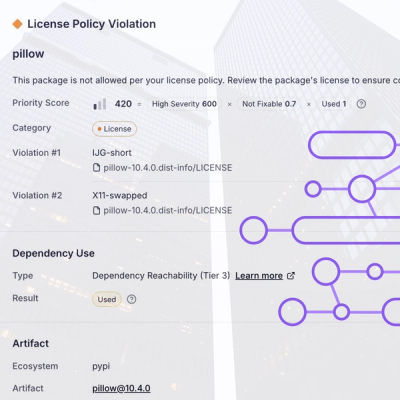
Research
/Security News
Critical Vulnerability in NestJS Devtools: Localhost RCE via Sandbox Escape
A flawed sandbox in @nestjs/devtools-integration lets attackers run code on your machine via CSRF, leading to full Remote Code Execution (RCE).
@codingame/languageserver-mutualized
Advanced tools
A tool to plug multiple clients over a single language server implementation



NPM module to plug multiple language clients on a single language server.
What you need to know:
What it allows you to do:
How it works:
npm install @codingame/languageserver-mutualized
2 functions are exported:
createLanguageClient which create a LanguageClient from a language server connectionbindLanguageClient which bind a client connection on an existing LanguageClient and return a promise resolved when the client leaves or the server is shutdownThere is an example that demonstrate how the languageserver-mutualized can be used. It uses monaco-editor and monaco-languageclient.
The important file is json-server-launcher.ts
To run it:
npm ci
npm start
It will open a page in your browser with 2 editors to illustrate the 2 use-cases:
After a change, most clients send some requests (SemanticTokens, CodeLens...). If a file is used by multiple clients, every client will send the request and the server will need to answer it multiple times.
To prevent this, a cache can be provided when creating the LanguageClient
The configuration coming from the client cannot be used. However, some language servers requires some configuration to work.
The configuration can be provided using the getConfiguration LanguageClient option.
It will be called when:
workspace/configuration request (the scope will be ignored)synchronizeConfigurationSections option (old deprecated way but still used by many language servers)FAQs
A tool to plug multiple clients over a single language server implementation
The npm package @codingame/languageserver-mutualized receives a total of 50 weekly downloads. As such, @codingame/languageserver-mutualized popularity was classified as not popular.
We found that @codingame/languageserver-mutualized demonstrated a not healthy version release cadence and project activity because the last version was released a year ago. It has 6 open source maintainers collaborating on the project.
Did you know?

Socket for GitHub automatically highlights issues in each pull request and monitors the health of all your open source dependencies. Discover the contents of your packages and block harmful activity before you install or update your dependencies.

Research
/Security News
A flawed sandbox in @nestjs/devtools-integration lets attackers run code on your machine via CSRF, leading to full Remote Code Execution (RCE).

Product
Customize license detection with Socket’s new license overlays: gain control, reduce noise, and handle edge cases with precision.

Product
Socket now supports Rust and Cargo, offering package search for all users and experimental SBOM generation for enterprise projects.